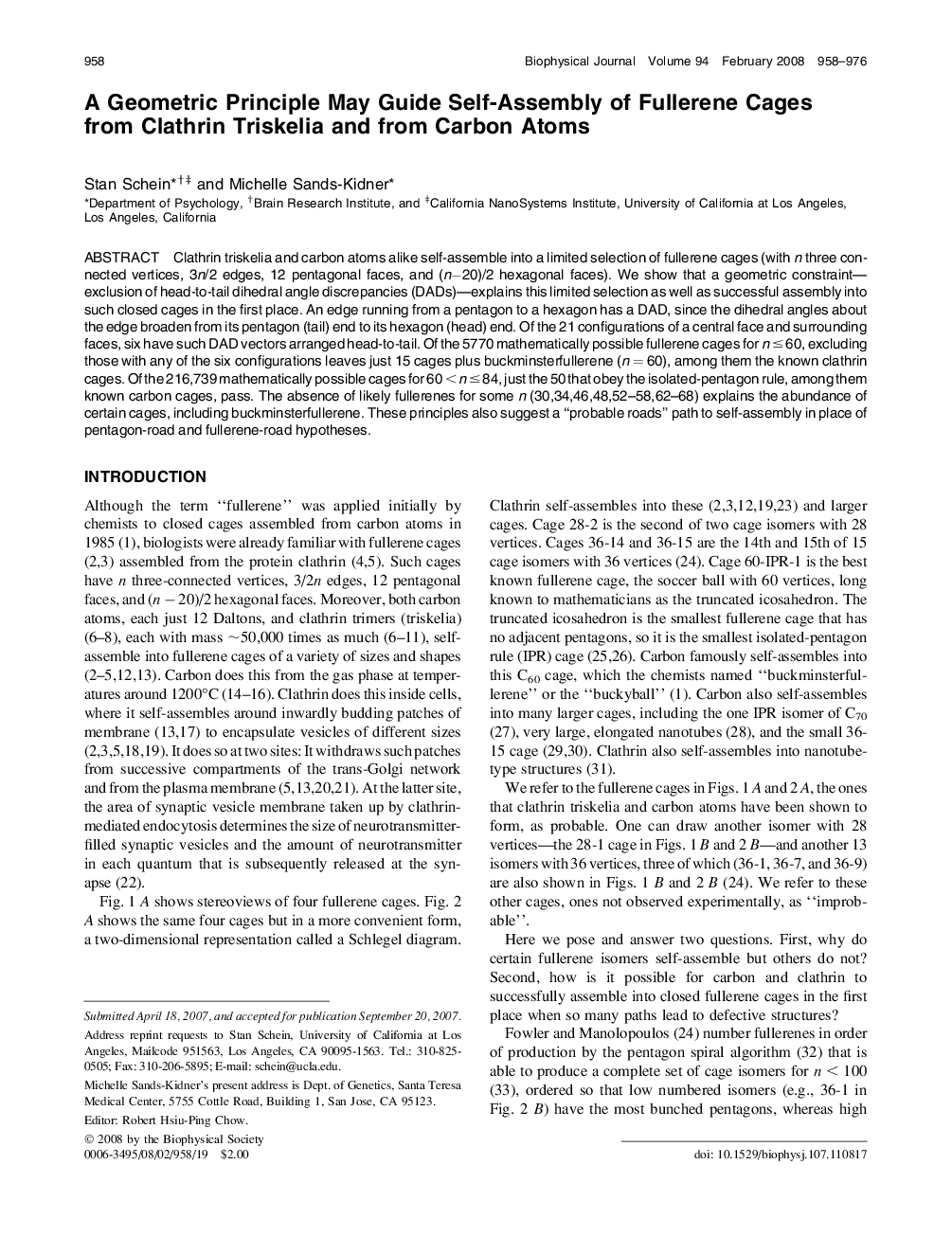| کد مقاله | کد نشریه | سال انتشار | مقاله انگلیسی | نسخه تمام متن |
|---|---|---|---|---|
| 1955252 | 1057817 | 2008 | 19 صفحه PDF | دانلود رایگان |

Clathrin triskelia and carbon atoms alike self-assemble into a limited selection of fullerene cages (with n three connected vertices, 3n/2 edges, 12 pentagonal faces, and (n−20)/2 hexagonal faces). We show that a geometric constraint—exclusion of head-to-tail dihedral angle discrepancies (DADs)—explains this limited selection as well as successful assembly into such closed cages in the first place. An edge running from a pentagon to a hexagon has a DAD, since the dihedral angles about the edge broaden from its pentagon (tail) end to its hexagon (head) end. Of the 21 configurations of a central face and surrounding faces, six have such DAD vectors arranged head-to-tail. Of the 5770 mathematically possible fullerene cages for n ≤ 60, excluding those with any of the six configurations leaves just 15 cages plus buckminsterfullerene (n = 60), among them the known clathrin cages. Of the 216,739 mathematically possible cages for 60 < n ≤ 84, just the 50 that obey the isolated-pentagon rule, among them known carbon cages, pass. The absence of likely fullerenes for some n (30,34,46,48,52–58,62–68) explains the abundance of certain cages, including buckminsterfullerene. These principles also suggest a “probable roads” path to self-assembly in place of pentagon-road and fullerene-road hypotheses.
Journal: - Volume 94, Issue 3, 1 February 2008, Pages 958–976